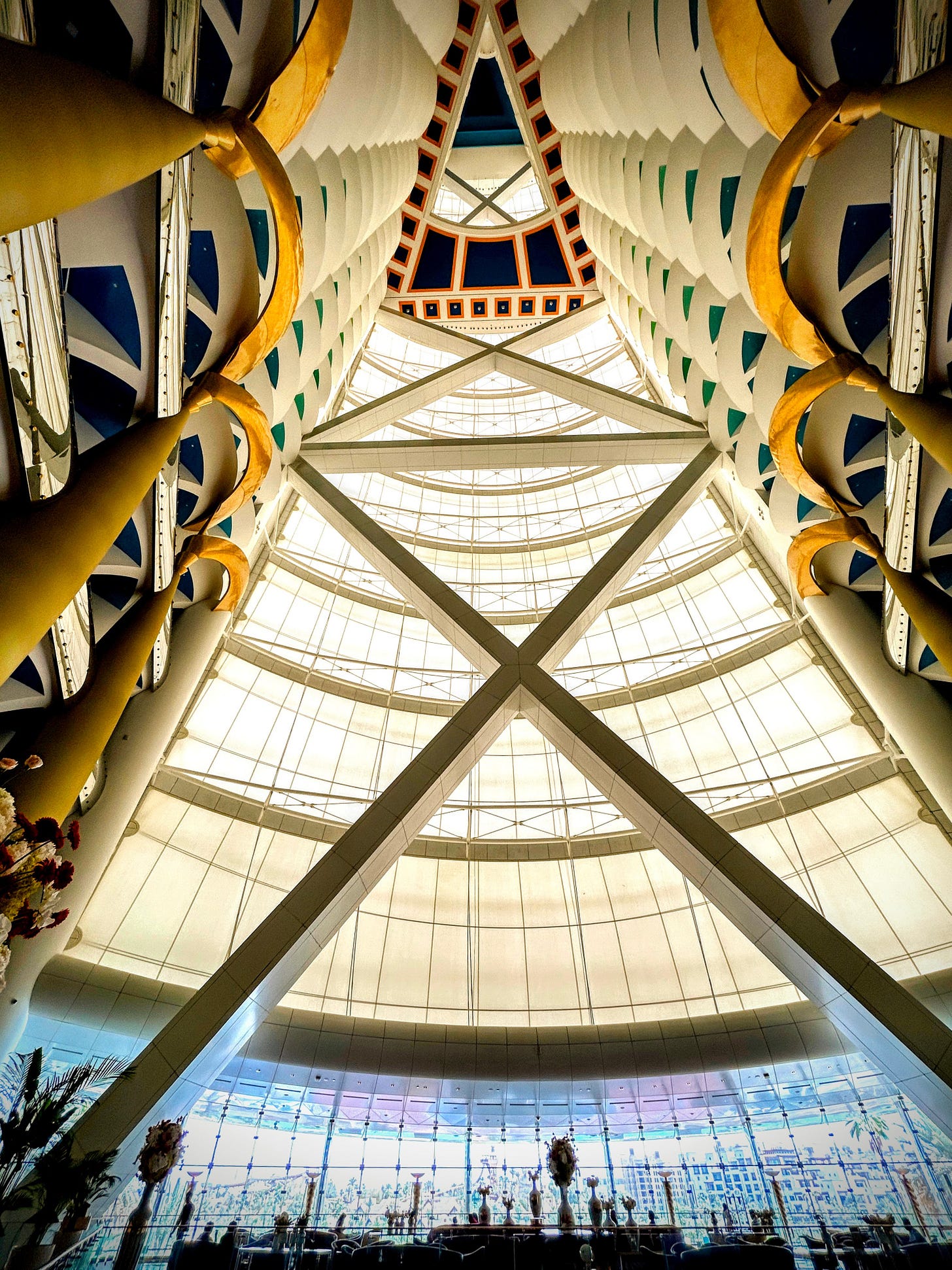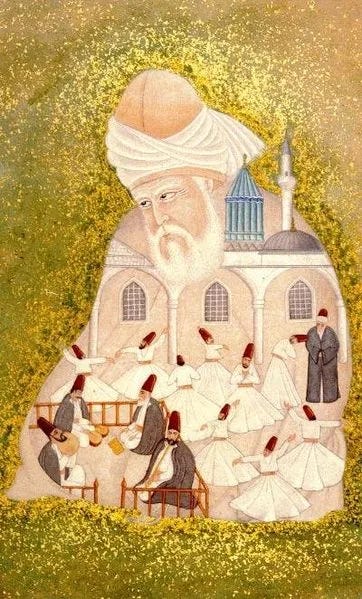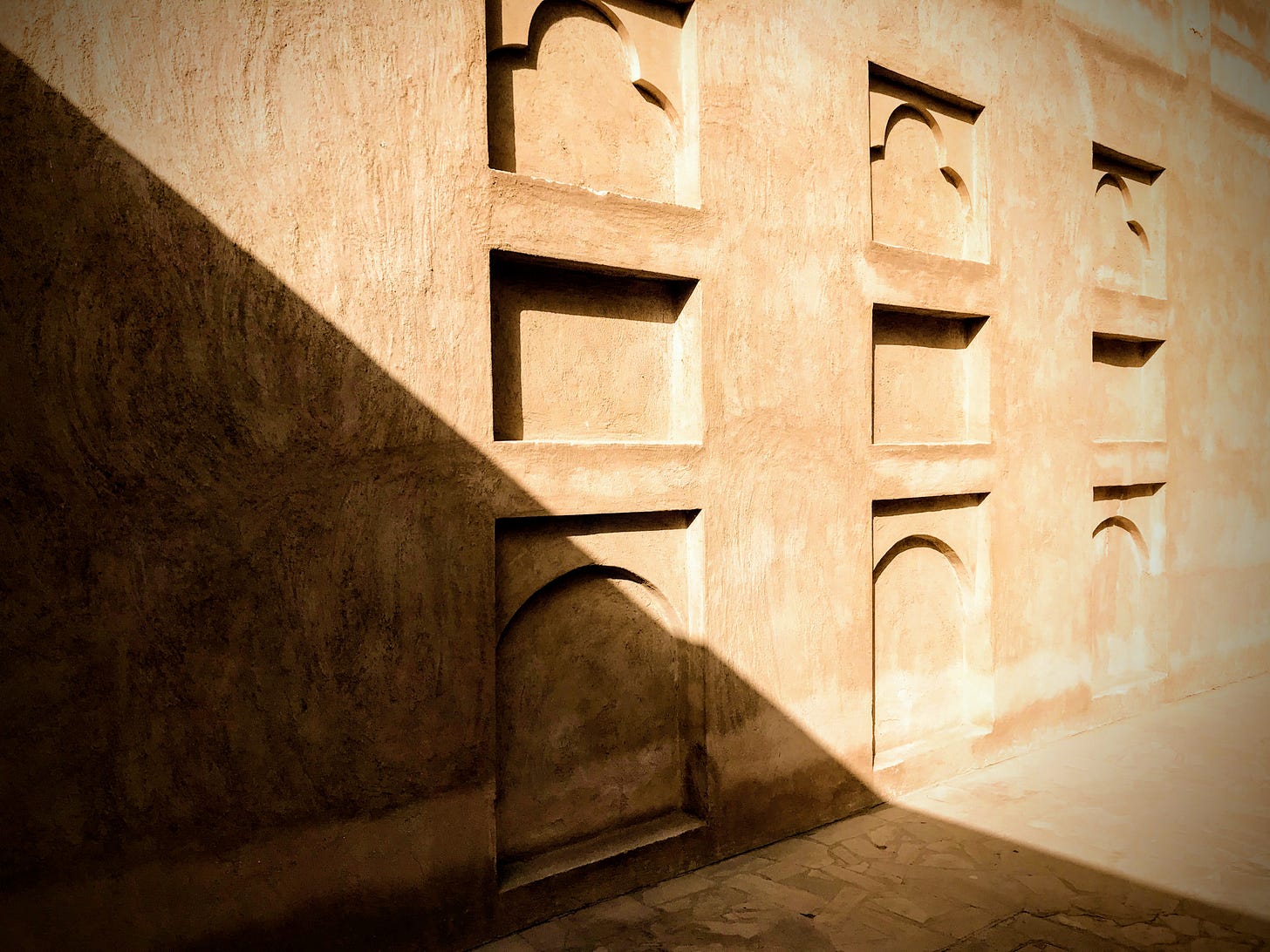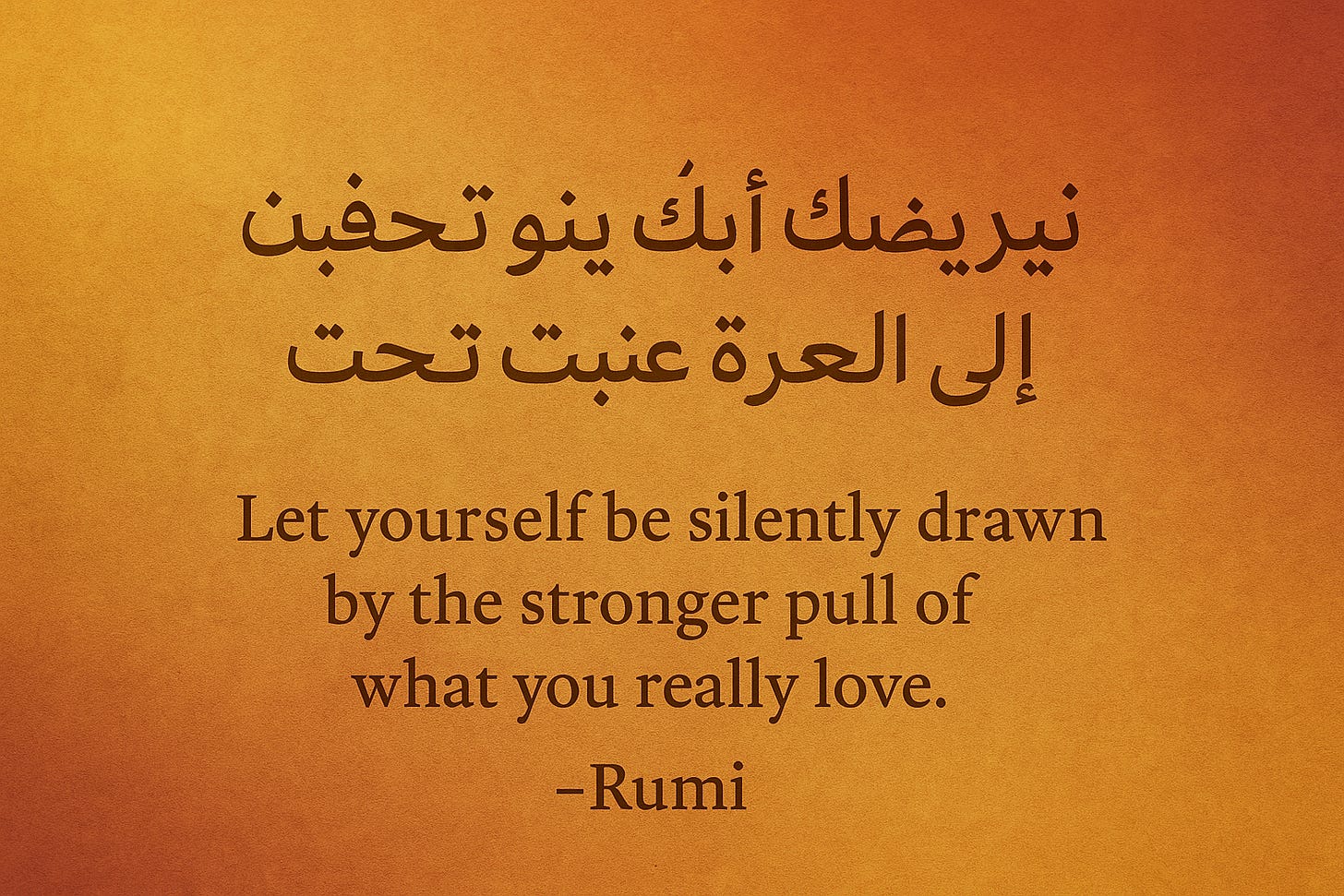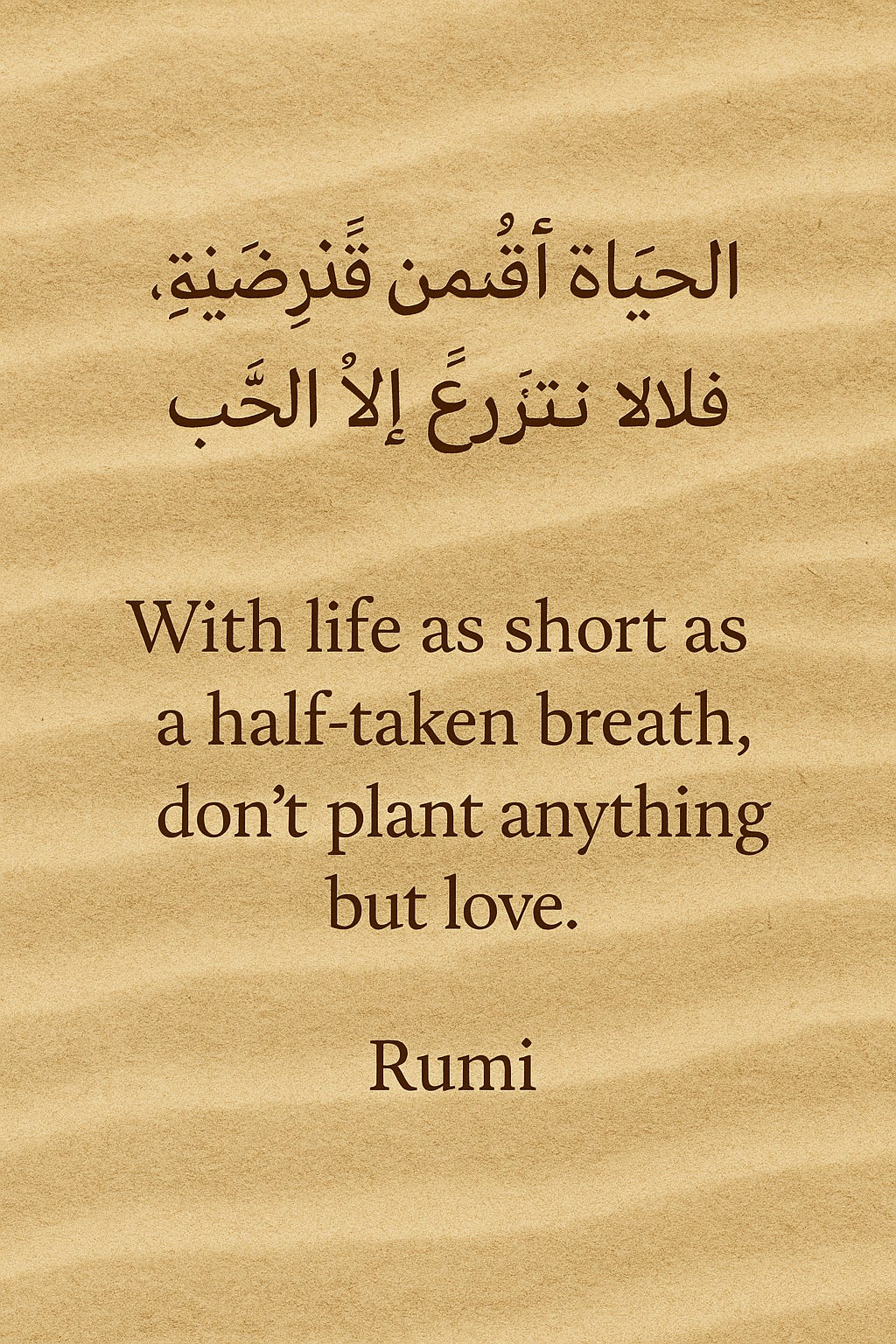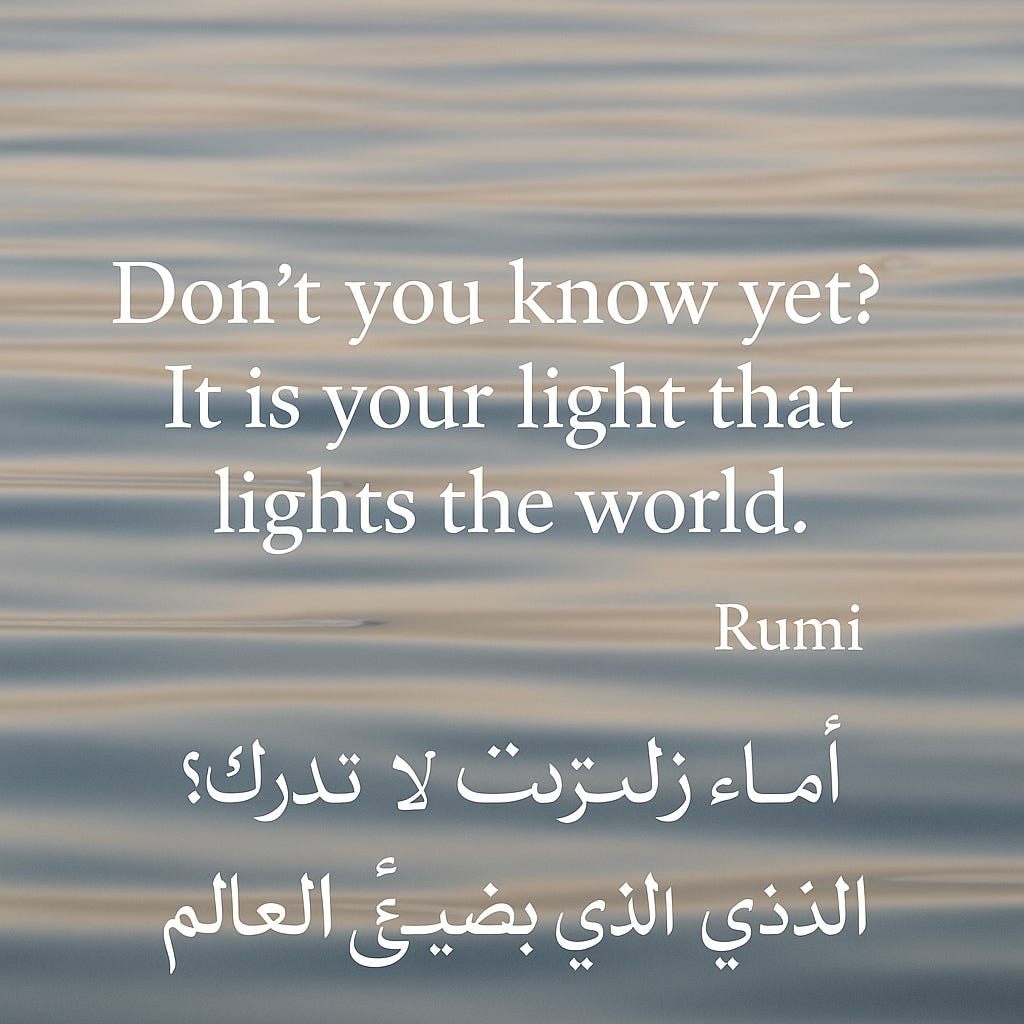This post is part of The Mirror and the Lens series — a reflection on memory, photography, light, and the timeless words of Rumi. Each piece stands on its own, but together they trace a journey across places seen, moments missed, and the beauty found in the fragments we carry.
There’s a quiet moment I keep returning to—a feeling more than a place.
It happened standing just inside the soaring lobby of the Burj Al Arab Hotel in Dubai—camera in hand, looking upward, not trying to capture something grand so much as to honor it.
The grandeur.
The dedication of the workers who spent years of their lives creating a place of beauty, opulence, and wonder.
The intricate dance between light, architecture, and human ambition.
I don't know if I captured it fully, but the feeling remains.
Grandeur. And a bit of whimsy.
Light on stone.
Light through glass.
Light, casting traces.
In my UAE reflection series, I wove in several quotes by Jalal al-Din Rumi—words that echoed the tone of my photographs, and maybe even the spirit behind them. At the time, I didn’t say much about why. Rumi’s voice simply belonged there.
But the more I thought about it, the more I realized: Rumi is more than just a poet. His words—written nearly 800 years ago—still feel alive. They still speak across centuries, cultures, and beliefs.
This post is an attempt to understand why.
A Personal Connection
I first encountered Rumi’s poetry more than two decades ago, during a program called Courage to Teach, founded by the educator and writer Parker Palmer. It was a two-year journey where a small group of teachers gathered several times a year at a peaceful retreat center, surrounded by woods, walking trails, and silence.
The program wasn’t religious, but it was deeply spiritual. We focused on teaching from the heart, leading authentically, and listening inwardly. Rumi’s poems were often used as centering reflections. I didn’t know much about him then—only that his words lingered long after I closed the pages.
Years later, during my first trip to the UAE in 2017, I began to connect the dots. I learned more about Rumi’s background, the mystical path of Sufism, and even the chance to witness a whirling performance under the desert stars. It was mesmerizing—something between prayer and poetry in motion.
I left with a quiet promise to myself: to learn more, to listen more deeply.
A Note on Context
Rumi—known formally as Jalal al-Din Muhammad Rumi—was a 13th-century Muslim scholar, teacher, and Sufi mystic. His poetry flows from a deeply Islamic tradition, though it speaks in ways that reach far beyond any single faith. I share these reflections as a fellow traveler, not a religious scholar—hoping to honor both the beauty of his words and the roots they grew from.
A Time of Crossroads
Rumi lived during a complicated and often turbulent time.
The 13th century saw the rise and fall of empires, religious wars, and mass migrations. The Crusades had left deep scars between the Christian and Muslim worlds. In Rumi’s home—Konya, part of the Seljuk Empire—faith was woven into every aspect of life.
Islam had long since spread from Arabia across North Africa, the Middle East, and parts of Asia. Christianity, too, was deeply rooted in Europe and the Eastern Mediterranean. Though the two faiths share deep ancestry, political and cultural divides often led to conflict.
Yet in that world of division, Rumi spoke of unity.
Who Was Jalal al-Din Rumi?
Rumi was born in 1207 in Balkh (in modern-day Afghanistan) and eventually settled in Konya, in present-day Turkey.
He was a scholar first—deeply trained in Islamic law and theology—and later, a spiritual teacher.
His life changed dramatically when he met a wandering mystic named Shams of Tabriz. Their friendship was so intense, so transformative, that it shattered Rumi’s old understandings and reassembled him as a poet, a seeker, a lover of the divine.
His greatest works—The Masnavi and Divan-e Shams—blend theology, storytelling, longing, and wonder.
Even in his lifetime, people of many faiths traveled to hear him speak.
A Universal Voice Across Time
Rumi’s poetry flows like a river, crossing languages, religions, and generations.
He speaks of yearning, love, grief, beauty, presence, and surrender. His metaphors—fire, water, light, the beloved—remain as vivid now as they were centuries ago.
After 9/11, when the world fractured yet again, readers across the West rediscovered Rumi’s poetry as a kind of antidote: a reminder that tenderness still had a voice.
Across the centuries, Christian monks, Jewish scholars, Buddhist teachers, and secular thinkers have found something living in Rumi’s words—something that transcends.
A Poet for This Moment
We live in an age of noise. But Rumi asks us to pause.
He reminds us that stillness is not emptiness.
That the ache of impermanence makes life beautiful.
That presence is its own form of prayer.
His poems are not instructions. They are invitations.
A Trace in the Light
When I look back at my photographs—especially the ones where nothing seems to be happening—I see them differently now.
A curve of shadow.
A ripple across water.
A door half-open.
Rumi helped me realize: these are not just images. They are prayers.
Whispers.
Reminders that beauty rarely shouts.
Coming Next: Rumi and the Lens
In the next post, I’ll explore how Rumi’s words continue to shape the way I see, through the lens of my camera and the lens of memory.
I’ll share how his poems helped me find new ways to hold light, grief, wonder, and maybe even a little more hope.
Thank you for traveling this far with me.




